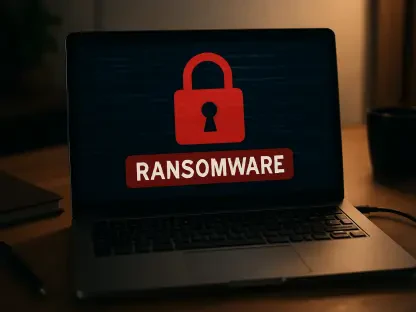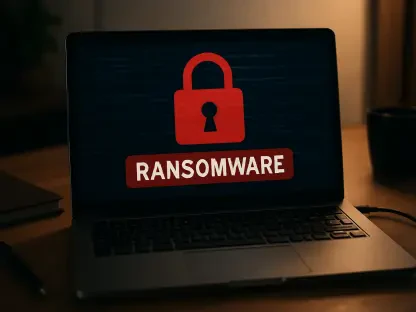In today’s hyper-connected enterprise environment, a staggering reality looms over security teams: the average organization juggles around 1,100 applications, a number that often climbs higher with undetected tools lurking in the shadows, creating a critical challenge for identity governance. This explosion of Software-as-a-Service (SaaS) and cloud-based apps, while fueling productivity, has created a treacherous gap in identity governance—a chasm where security and compliance hang in the balance. How can businesses keep pace when the very tools meant to empower them threaten to undermine their defenses?
The importance of this issue cannot be overstated. With digital transformation driving rapid app adoption, identity governance and administration (IGA) systems struggle to integrate these tools effectively, leaving organizations exposed to unauthorized access and regulatory penalties. This app integration chasm isn’t just a technical glitch; it’s a strategic crisis that impacts every layer of an enterprise, from IT departments to boardrooms. Addressing it is critical for safeguarding sensitive data and maintaining trust in an era of relentless cyber threats.
Why Identity Governance Can’t Match the App Surge
The modern workplace thrives on a dizzying array of applications, each promising to streamline operations or enhance collaboration. Yet, this proliferation—averaging 1,100 apps per organization according to recent Omdia research—has outstripped the capacity of identity teams to manage access securely. The sheer volume, compounded by cloud migration and remote work trends, creates a landscape where governance lags dangerously behind innovation.
This disconnect isn’t merely a numbers game. Many applications, especially those adopted without IT oversight, evade traditional security controls, forming a hidden underbelly of risk known as shadow SaaS. As enterprises race to adopt new tools, the inability of IGA systems to keep up transforms potential efficiencies into vulnerabilities, setting the stage for breaches that could cost millions in damages and reputational loss.
The Security Fallout from Rampant App Growth
Beyond the challenge of quantity, app proliferation reshapes the security terrain in profound ways. The shift toward SaaS tools, driven by the need for agility and real-time connectivity, has introduced countless entry points for cyber threats. Each unintegrated app represents a potential weak link, lacking essentials like Single Sign-On (SSO) or Multi-Factor Authentication (MFA), which are vital for robust defense.
Moreover, the lack of visibility into these tools exacerbates the problem. Shadow SaaS, often adopted by individual teams for quick solutions, bypasses centralized oversight, leaving security teams blind to the full scope of their digital ecosystem. This opacity not only heightens the risk of unauthorized access but also complicates compliance with stringent regulations, placing organizations in a precarious position amid evolving legal landscapes.
Diving into the Integration Gap: Risks and Roadblocks
At the heart of this crisis lies the app integration chasm—a stark divide where only 54% of applications are adequately tied into IGA systems, as per Omdia’s findings. This gap manifests in multiple challenges, starting with incomplete coverage that leaves nearly half of an organization’s apps unprotected by modern identity protocols. Such exposure invites risks that can spiral into full-scale security incidents.
Technical hurdles further widen this divide. Many apps, dubbed “disconnected apps,” lack support for standards like SAML or SCIM, forcing teams to rely on costly, complex custom connectors. Compounding this are resource constraints and organizational silos, where limited budgets and decentralized app purchasing hinder cohesive integration efforts. For instance, a leading U.S. financial institution manages over 14,000 apps, prioritizing compliance-driven integrations while struggling with the rest, highlighting the scale of this multifaceted barrier.
Industry Echoes: Real Stories from the Frontlines
Voices from the field paint a vivid picture of the integration struggle, grounding the issue in tangible reality. Omdia’s “Identity Security at a Crossroads” report underscores the 54% integration rate as a critical benchmark, signaling a pervasive vulnerability that keeps security professionals on edge. Senior Analyst Todd Thiemann captures the urgency, stating, “The app explosion is a tidal wave that security teams can’t outrun without innovative tools and strategies.”
Beyond data, firsthand accounts reveal the chaos of untracked apps slipping through the cracks. Enterprises across sectors report grappling with shadow SaaS, where tools adopted ad hoc by employees evade detection until a breach forces action. These real-world perspectives highlight a shared recognition of the integration gap’s severity, emphasizing the need for immediate, collective response to safeguard digital environments.
Strategies to Close the Integration Divide
Tackling the app integration chasm demands practical, prioritized strategies tailored to the nuances of identity security. A starting point is focusing on high-risk, compliance-critical applications, ensuring they are fortified with SSO and MFA before addressing less sensitive tools. This targeted approach maximizes impact where vulnerabilities are most acute, offering a foothold for broader governance.
Innovation from vendors also plays a pivotal role. Solutions from IGA providers like SailPoint and CyberArk, alongside startups such as Lumos, simplify app onboarding and extend governance to disconnected apps. Additionally, combating shadow SaaS through discovery tools can restore visibility, while partnerships with systems integrators address bespoke needs in regulated industries. Strategic resource allocation—securing budget and staffing—further ensures sustained progress, providing a comprehensive roadmap to bridge this persistent gap.
Reflecting on Paths Forward
Looking back, the journey through the app integration chasm revealed a landscape fraught with challenges, from the overwhelming surge of enterprise applications to the stark security gaps left by incomplete IGA coverage. Each insight, backed by hard data and industry voices, painted a picture of urgency that demanded attention at every organizational level. The stories of struggle and innovation alike underscored a critical truth: identity governance has become a linchpin of enterprise resilience.
Moving ahead, organizations must commit to actionable steps, prioritizing critical app integrations while embracing vendor tools that streamline processes. Investing in discovery mechanisms to uncover shadow SaaS proves essential, as does fostering collaboration with integrators for tailored solutions. As the digital ecosystem continues to evolve, staying proactive with resource planning and adopting emerging technologies will be key to not just crossing, but closing, this chasm for good.









